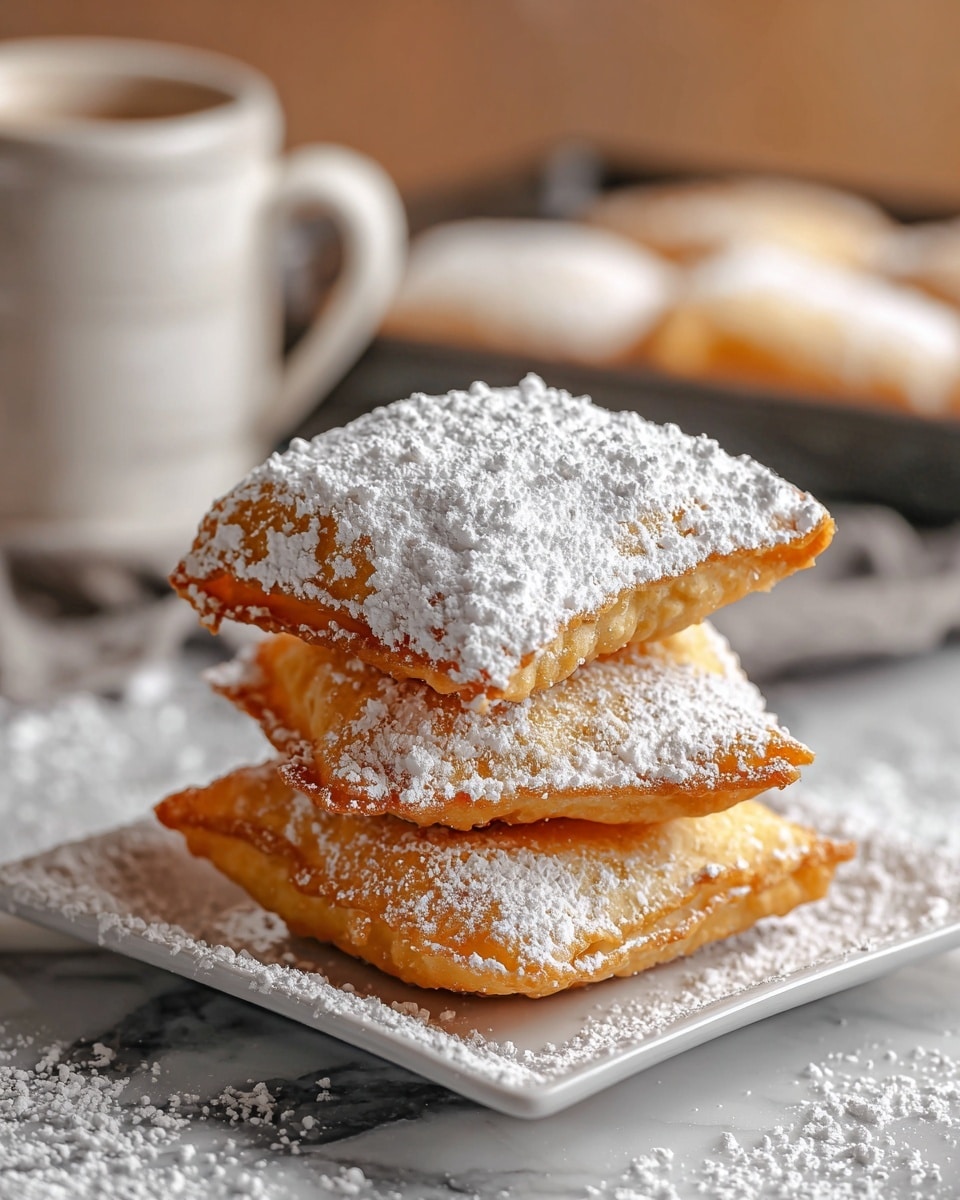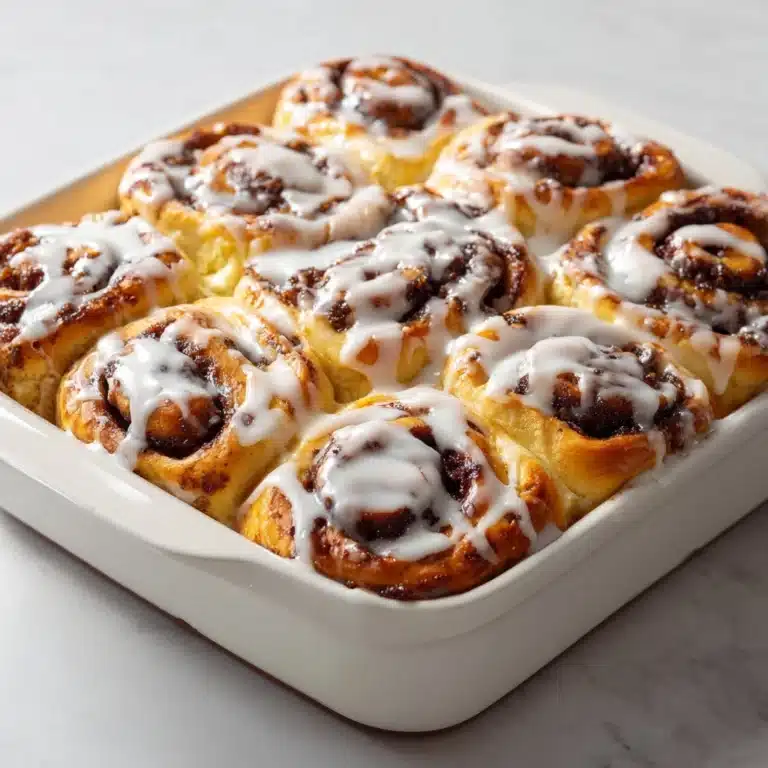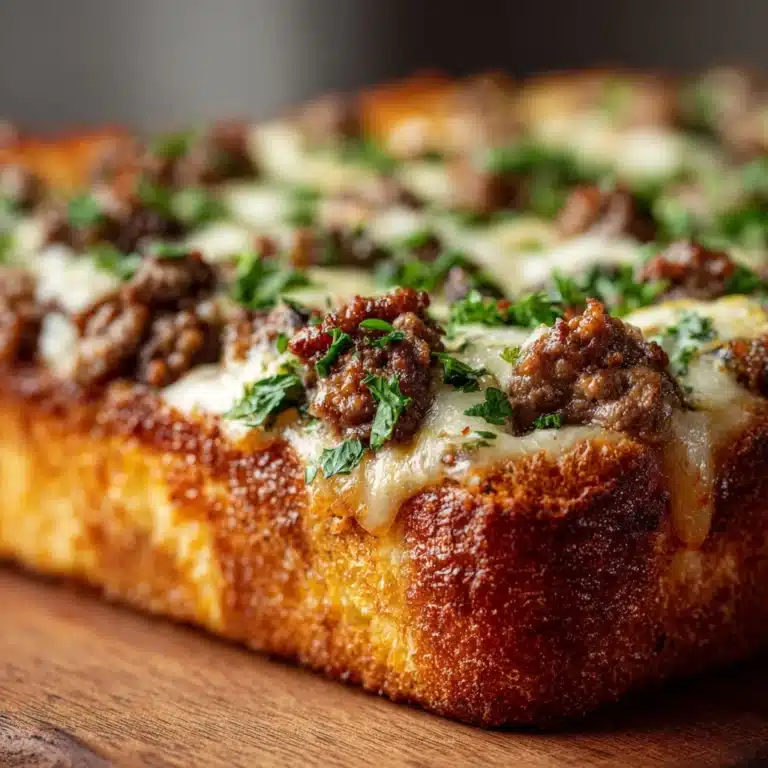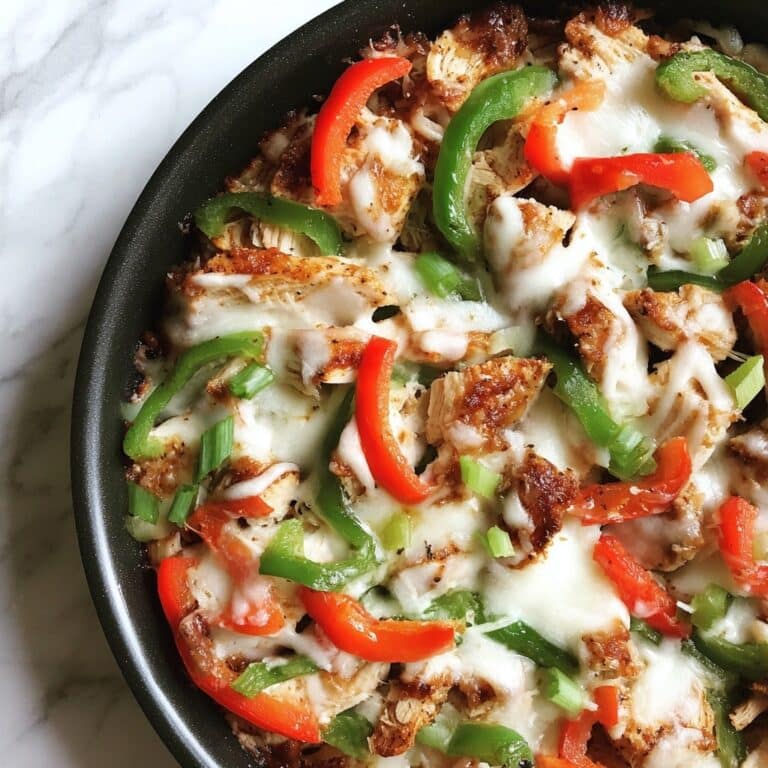If you’ve ever dreamed of sinking your teeth into warm, fluffy pillows of sweet fried dough dusted with powdered sugar, then this Vanilla French Beignets Recipe is about to become your new obsession. These irresistibly tender treats blend a subtle vanilla fragrance with a light, airy texture that makes every bite a little celebration. Perfect for a cozy brunch or an indulgent dessert, these beignets bring a touch of French elegance and New Orleans charm right into your kitchen, practically begging to be shared with friends and family.
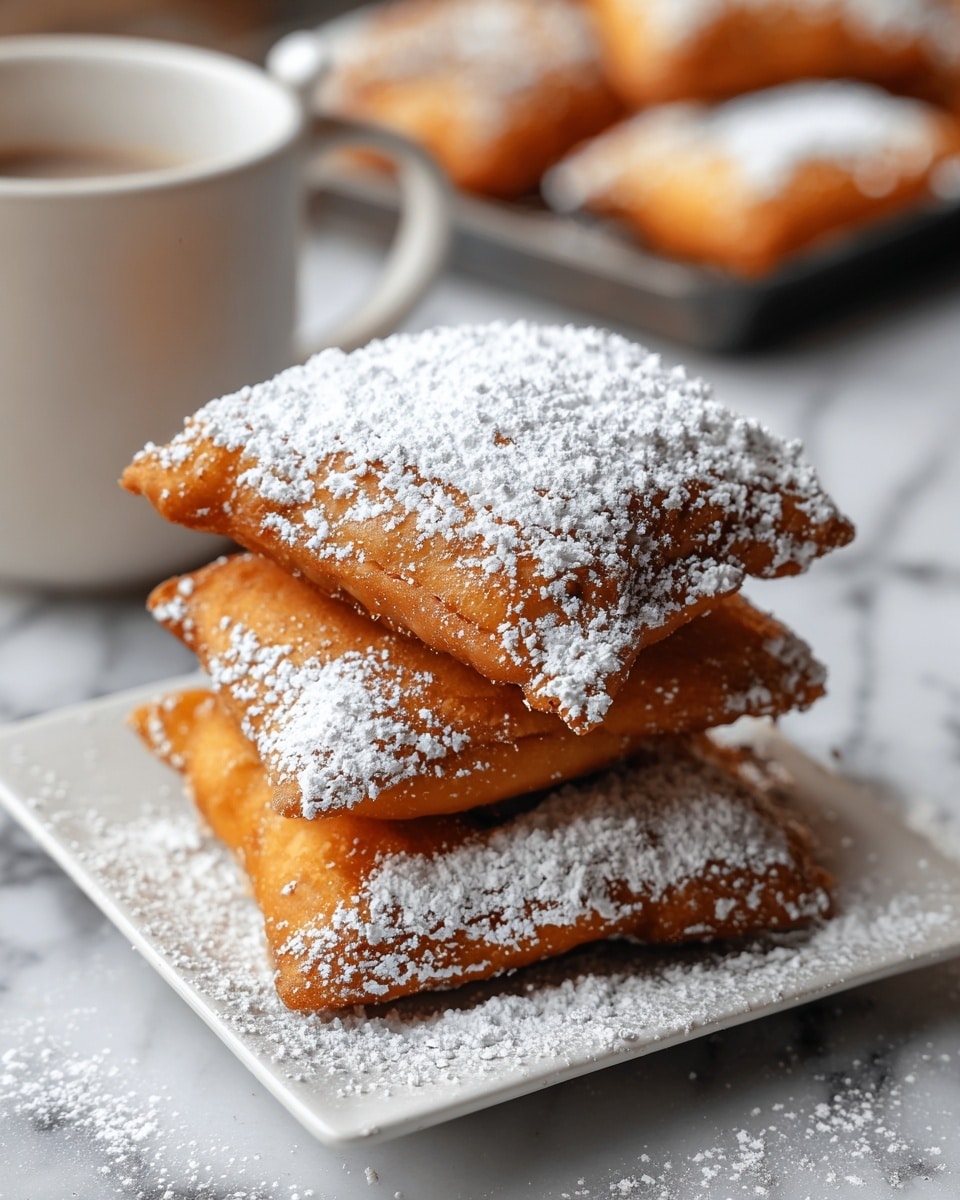
Ingredients You’ll Need
Getting the perfect beignets starts with a handful of simple, fresh ingredients that work harmoniously to create an unmatched taste and texture. Each one plays a key role, from activating the yeast to giving the dough its delicate structure and rich flavor.
- 2 ¼ teaspoons active dry yeast (1 packet): This little powerhouse helps your dough rise to fluffy perfection.
- ¾ cup warm water (110°F): Just right to awaken the yeast without killing it, ensuring an airy dough.
- ¼ cup granulated sugar: Adds sweetness and helps with browning when fried.
- 2 large eggs: Bring richness and help bind ingredients with a tender crumb.
- ½ cup whole milk: Adds moisture and keeps the beignets soft and creamy.
- 1 teaspoon pure vanilla extract: The star flavor that makes these beignets stand out.
- ½ teaspoon salt: Balances sweetness and deepens overall flavor.
- 3 ½ cups all-purpose flour (plus more for rolling): The foundation for the dough, providing structure without toughness.
- ¼ cup unsalted butter (softened): Infuses richness and softness into the dough.
- Vegetable oil for frying: Neutral oil perfect for achieving that golden, crispy exterior.
- Powdered sugar for dusting: The classic finishing touch that melts into every crevice.
How to Make Vanilla French Beignets Recipe
Step 1: Activate the yeast and combine wet ingredients
Start by dissolving the yeast in warm water, allowing it to sit for 5 to 10 minutes until it becomes foamy and alive. This step is crucial—it ensures your beignets will have that light, airy texture. Then, mix in the sugar, eggs, milk, vanilla extract, and salt, blending all the wet ingredients into a fragrant, velvety mix.
Step 2: Form the dough and incorporate butter
Add 2 cups of the flour first, stirring until the mixture is smooth. Then toss in the softened butter and gradually add the remaining flour, mixing until a soft dough forms. This gradual approach lets the flour and butter meld perfectly, resulting in a dough that’s pliable but not sticky—ready for the magic kneading stage.
Step 3: Knead and let the dough rise
On a floured surface, knead the dough for about 5-7 minutes until it’s smooth and elastic. This kneading builds the gluten network that gives the beignets their structure while keeping them tender. Next, transfer your dough to a greased bowl, cover it with a clean towel, and let it rise in a warm spot for 1 to 2 hours until doubled in size—a critical wait to develop flavor and fluffiness.
Step 4: Shape and proof the beignets
Once risen, gently punch down the dough to release excess air, then roll it out to about half an inch thick. Cut into 2-inch squares, placing them on a floured tray. Cover and allow them to rise again for 30 minutes—this second proof ensures they will puff beautifully during frying.
Step 5: Fry to perfection
Heat vegetable oil in a deep pot or fryer to 350°F (175°C). Fry the beignets in batches, cooking each side for 1 to 2 minutes until they puff up and turn a glorious golden brown. Use a slotted spoon to transfer them to paper towels to drain excess oil. Finally, coat generously with powdered sugar, embracing the nostalgic, snow-dusted look that makes beignets so irresistible.
How to Serve Vanilla French Beignets Recipe
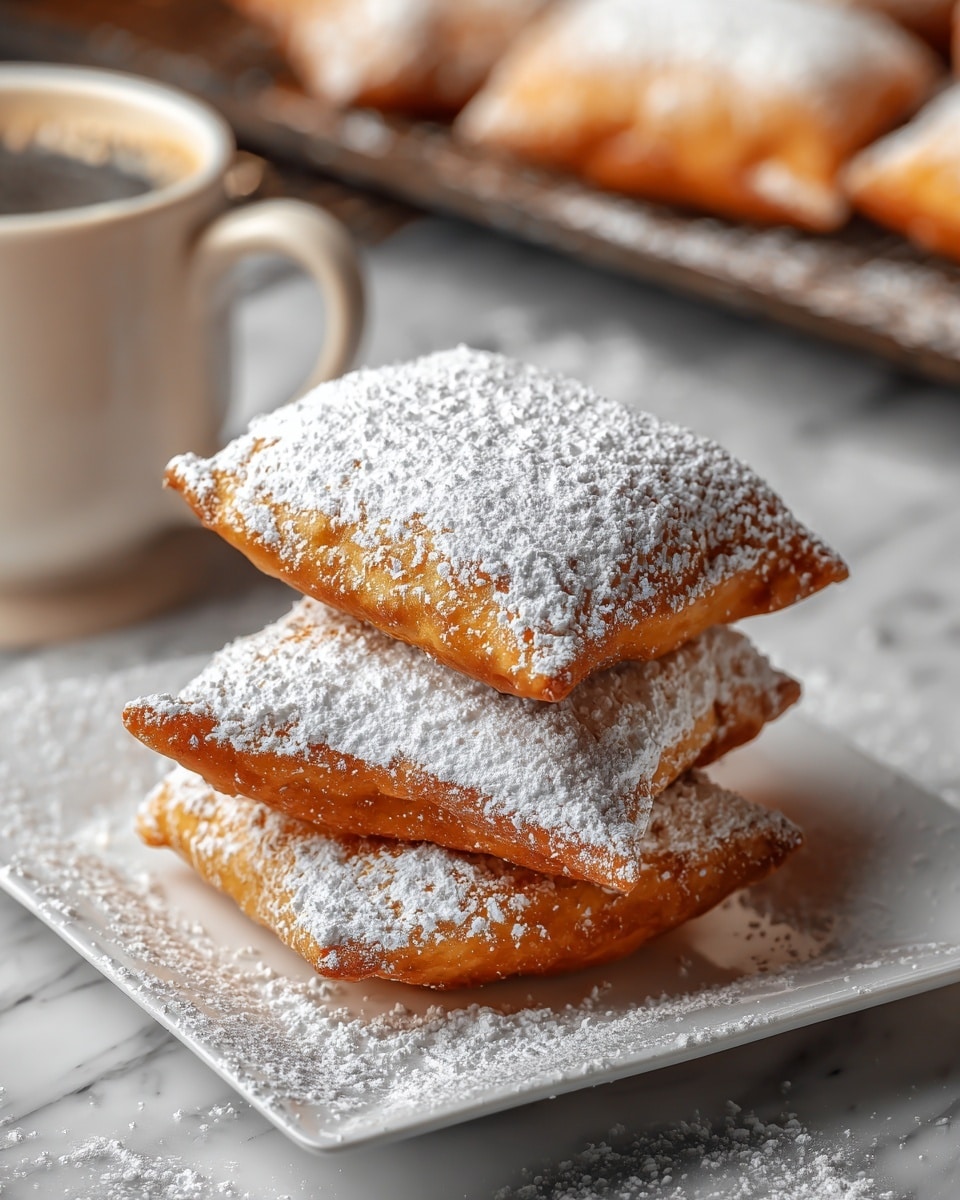
Garnishes
While traditional powdered sugar is a must, feel free to sprinkle a light dusting of cinnamon or nutmeg for a warm spice twist. A drizzle of honey or a dusting of cocoa powder can also add a playful flavor dimension that enhances the vanilla notes beautifully.
Side Dishes
These sweet beignets pair wonderfully with a rich cup of café au lait or a creamy vanilla latte. For a brunch spread, serve alongside fresh berries, whipped cream, or a simple fruit compote to add a fresh contrast that balances the richness.
Creative Ways to Present
For a festive touch, stack the beignets in a pyramid on a cake stand and surround them with small bowls of dipping sauces like chocolate ganache or salted caramel. Or, create bite-sized beignet sandwiches by sandwiching fruit jam or nut butter between two pieces—delightfully playful and perfect for sharing!
Make Ahead and Storage
Storing Leftovers
If you have any beignets left (which is rare!), keep them in an airtight container at room temperature for up to one day. They’re best enjoyed fresh, but storing them properly keeps them from drying out too quickly.
Freezing
Beignets freeze surprisingly well. After frying and cooling completely, place them in a single layer on a baking sheet, freeze until firm, then transfer to a freezer bag. Frozen beignets can last for up to 2 months, ready to be reheated whenever you’re craving that fluffy sweetness.
Reheating
To revive day-old or frozen beignets, warm them gently in a 300°F oven for 5 to 7 minutes until heated through. This method crisps up the exterior and softens the interior without drying them out, bringing them deliciously close to freshly fried perfection.
FAQs
Can I use instant yeast instead of active dry yeast?
Absolutely! If you use instant yeast, you can skip the proofing step and mix it directly into the dry ingredients. Just be sure to adjust the rising times slightly; instant yeast tends to work faster than active dry.
What’s the best oil to fry these beignets?
Vegetable oil or canola oil are ideal for frying beignets because of their neutral flavor and high smoke points. Avoid olive oil or butter, as they can burn quickly and alter the flavor.
How important is the second rising before frying?
The second rise is key to achieving those lovely puffy beignets that practically melt in your mouth. Skipping this step can result in denser, less airy treats, so try not to rush it for the best texture.
Can I make these beignets gluten-free?
Traditional beignets rely heavily on gluten for their structure and chew, so substituting gluten-free flour without adjustments will be challenging. However, experimenting with gluten-free blends and adding binding agents might yield acceptable results if you’re willing to experiment.
Is there a way to make beignets less sweet?
Yes! You can reduce the amount of sugar in the dough or dust less powdered sugar on top. Keep in mind that the powdered sugar is a signature feature, so cutting back too much might change the overall experience, but it’s easy to adapt to your taste.
Final Thoughts
There’s something truly magical about making Vanilla French Beignets Recipe at home—the way the dough transforms, that irresistible aroma filling the kitchen, and of course, biting into a warm, fluffy beignet dusted with snow-like powdered sugar. Once you try this recipe, you’ll understand why it’s a beloved classic that brings people together and creates sweet memories. So gather your ingredients, get frying, and share a moment of pure delight with everyone around you.
Print
Vanilla French Beignets Recipe
- Total Time: 2 hours 30 minutes
- Yield: 20 beignets 1x
- Diet: Vegetarian
Description
Vanilla French Beignets are light, fluffy deep-fried pastries with a hint of pure vanilla. This classic French dessert, popularized in New Orleans, features a soft yeast dough fried to golden perfection and dusted with powdered sugar for a sweet, irresistible treat perfect for brunch or dessert.
Ingredients
Yeast Mixture
- 2 ¼ teaspoons active dry yeast (1 packet)
- ¾ cup warm water (110°F)
Dough
- ¼ cup granulated sugar
- 2 large eggs
- ½ cup whole milk
- 1 teaspoon pure vanilla extract
- ½ teaspoon salt
- 3 ½ cups all-purpose flour (plus more for rolling)
- ¼ cup unsalted butter (softened)
For Frying and Serving
- Vegetable oil for frying
- Powdered sugar for dusting
Instructions
- Activate the yeast: In a large bowl, dissolve the active dry yeast in the warm water and let it sit for 5–10 minutes until the mixture becomes foamy, indicating the yeast is active.
- Prepare the dough: Stir in the granulated sugar, eggs, whole milk, pure vanilla extract, and salt into the yeast mixture. Add 2 cups of all-purpose flour and mix until smooth. Then add the softened butter and the remaining flour, mixing until a soft dough forms.
- Knead the dough: On a floured surface, knead the dough for about 5–7 minutes until it becomes smooth and elastic, which develops the gluten structure necessary for a light beignet.
- First rise: Transfer the dough to a greased bowl, cover it with a clean towel, and let it rise in a warm place for 1–2 hours or until it doubles in size.
- Shape the beignets: Punch down the risen dough and roll it out on a lightly floured surface to about ½ inch thickness. Cut the dough into 2-inch squares, place them on a floured tray, then cover and allow the dough to rise again for 30 minutes.
- Heat oil: Heat vegetable oil in a deep pot or fryer to 350°F (175°C), which is the ideal temperature for frying to achieve a golden, crispy exterior without absorbing excess oil.
- Fry the beignets: Fry the dough squares in batches for 1–2 minutes per side until they puff up and turn golden brown. Use a slotted spoon to remove them from the oil and drain on paper towels to remove excess oil.
- Serve: Dust the warm beignets generously with powdered sugar and serve immediately for the best texture and flavor.
Notes
- For extra flavor, add a pinch of ground nutmeg to the dough before kneading.
- Beignets are best enjoyed fresh; however, you can reheat leftovers in the oven at 300°F for 5–7 minutes to refresh them.
- Prep Time: 20 minutes
- Cook Time: 15 minutes
- Category: Dessert
- Method: Frying
- Cuisine: French
